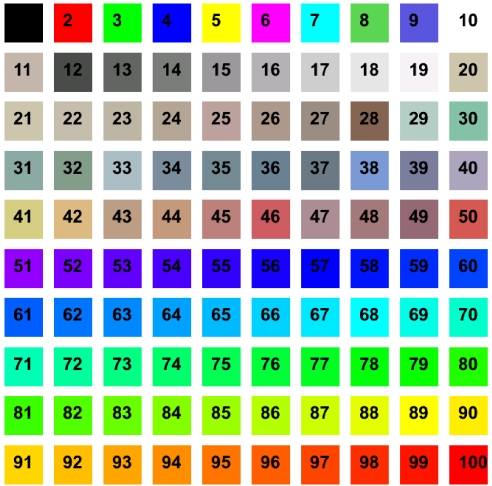
 |
Introduction and useful linksRootWikipedia, users-guide (5.26), Reference Guide, HowTo's, Tutorials, Root Talk, user forums. RootROOT is an object-oriented program and library developed by CERN for the visualization and data processing. It provides containers for data analysis. |
Navigating Root
• CINT/ROOT C/C++ Interpreter
• TBrowser
Starting Root
• CINT/ROOT C/C++ Interpreter:
>root --help Usage: root [-l] [-b] [-n] [-q] [dir] [[file:]data.root] [file1.C ... fileN.C] Options: -b : run in batch mode without graphics -n : do not execute logon and logoff macros as specified in .rootrc -q : exit after processing command line macro files -l : do not show splash screen dir : if dir is a valid directory cd to it before executing -? : print usage -h : print usage --help : print usage -config : print ./configure optionsStep Up Corner:
• Examples how to call a root macro from the command line:
>root test.C >root -lbq test.C\(4\) >root -lb test.C\(8,15\) >root -l test.C\(\"myfile.root\",2342\)
Compiling a root macro
• CINT/ROOT C/C++ Interpreter:
root -l root [0] gSystem->CompileMacro("test_macro.C"); root [1] test() root -l root [0] gSystem->Load("test_macro_C.so"); // loading the shared library we created earlier root [1] test()
Using an ntuple or tree
• CINT/ROOT C/C++ Interpreter:
root -l TFile *mfile = new TFile("filename.root"); TTree *tree = (TTree*)mfile->Get("ntuple"); tree->Draw("x");• Generating a class based on your tree:
root -l >TFile *mfile = new TFile("filename.root"); >TTree *tree = (TTree*)mfile->Get("ntuple"); >tree->MakeClass();MakeClass will create a source and header file for your class based on the ntuple. This is definitely the way to go for more complicated data analysis.Step Up Corner:
• Examples using a tree:
>tree->AddFriend("Hits",mfile); >tree->Draw("x","weight"); >tree->Draw("x-z","y","y>1623"); // (expression, weight, condition) >tree->Draw("(x-z) > histogram","y","(y>4) && (z<8)"); // (expression, weight, condition)
| Color and Markers: |  |
 |
Adding a legend and title to your plots
• Example of using a TLatex:
///////////////////////////// /// TLatex Title /// ///////////////////////////// char title[200]; sprintf(title,"Average Number of Events"); TLatex *tex1 = new TLatex(1,50,title); tex1->SetTextSize(0.055); tex1->SetTextColor(1); tex1->Draw("same");• Example of using a TLegend:
//////////// // Legend // //////////// char legend1[100]; char legend2[100]; char legend3[100]; sprintf(legend1, "Simulation Background"); sprintf(legend2, "Atmospheric Neutrino Simulation"); sprintf(legend3, "Data"); TLegend *le = new TLegend(.55, 0.76, .89, .90); le->AddEntry(h1_bkg ,legend1, "F"); le->AddEntry(h1_sig ,legend2, "F"); le->AddEntry(h1_data,legend3,"LP"); le->SetFillColor(0); le->Draw("same");
How to scale your histogram correctly
• Example:
//////////////////////// // resizing histogram // //////////////////////// float xmax = h1_sim->GetXaxis()->GetXmax(); float xmin = h1_sim->GetXaxis()->GetXmin(); float ymax = h1_sim->GetMaximum(); float ymin = h1_sim->GetMinimum(); if(h1_data->GetMaximum() > ymax) ymax = h1_data->GetMaximum(); if(h1_data->GetMinimum() < ymin) ymin = h1_data->GetMinimum(); if(ymin >0 ) ymin =0; ymax = (ymax+sqrt(ymax)) *1.2; // increase y axis maximum by sqrt of its value (simple stat error for error bad) and 20% to avoid the distribution being squeezed into the histogram and so that the error bars can show up h1_sim->GetYaxis()->SetRangeUser(0,ymax); printf("Yaxis [%f, %f]\n",ymin,ymax); // Redraw for clean plot // h1_sim->Draw(); h1_data->Draw("same");
Example scripts:
• Please find examples here
pyroot
• Presentation from Jim on pyroot
• How to use the pyroot interpreter